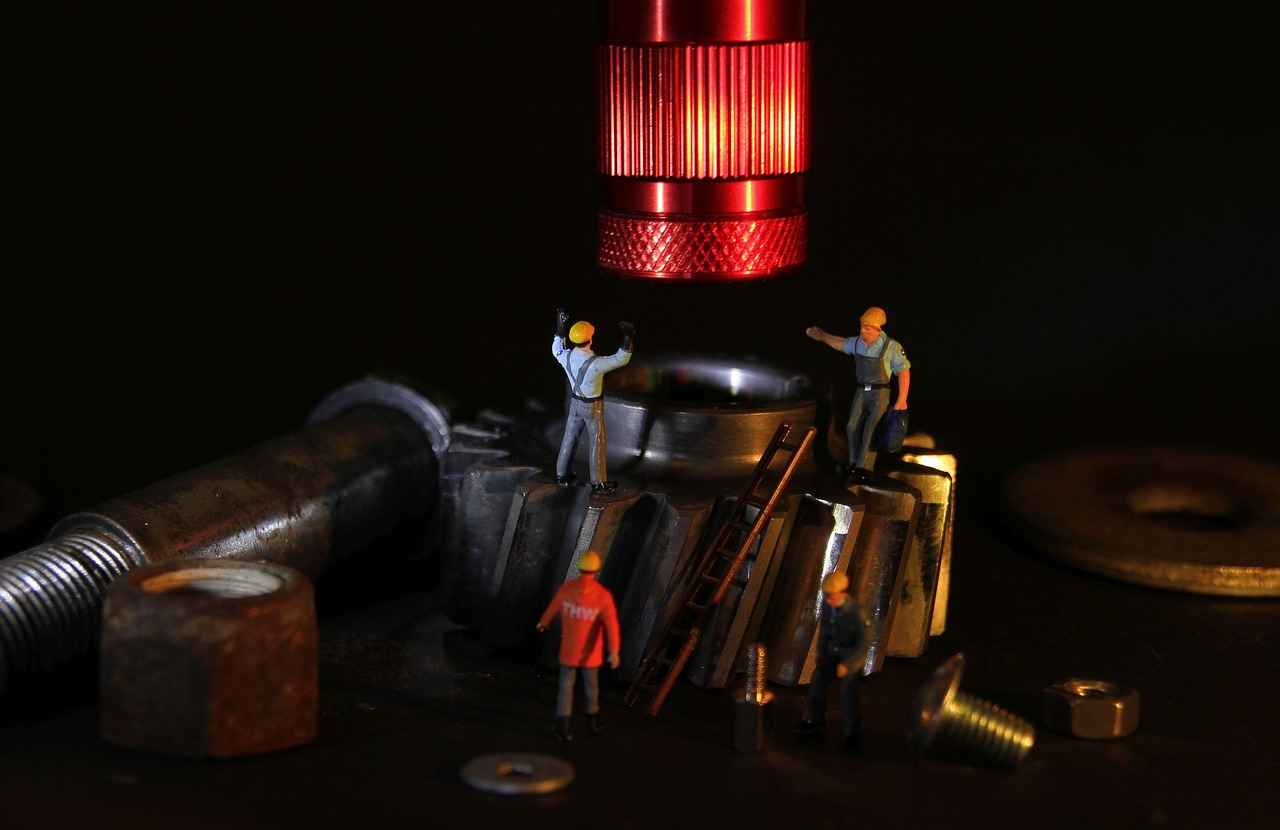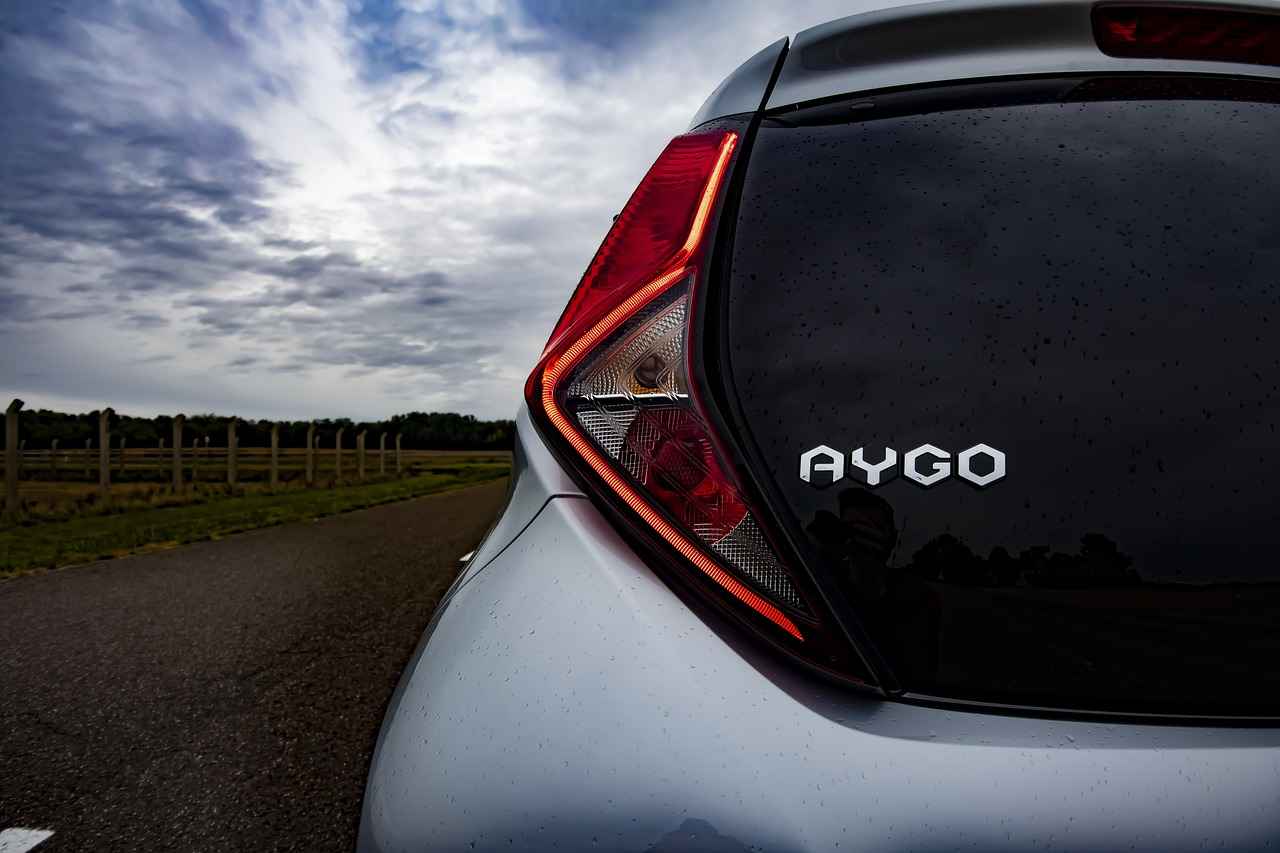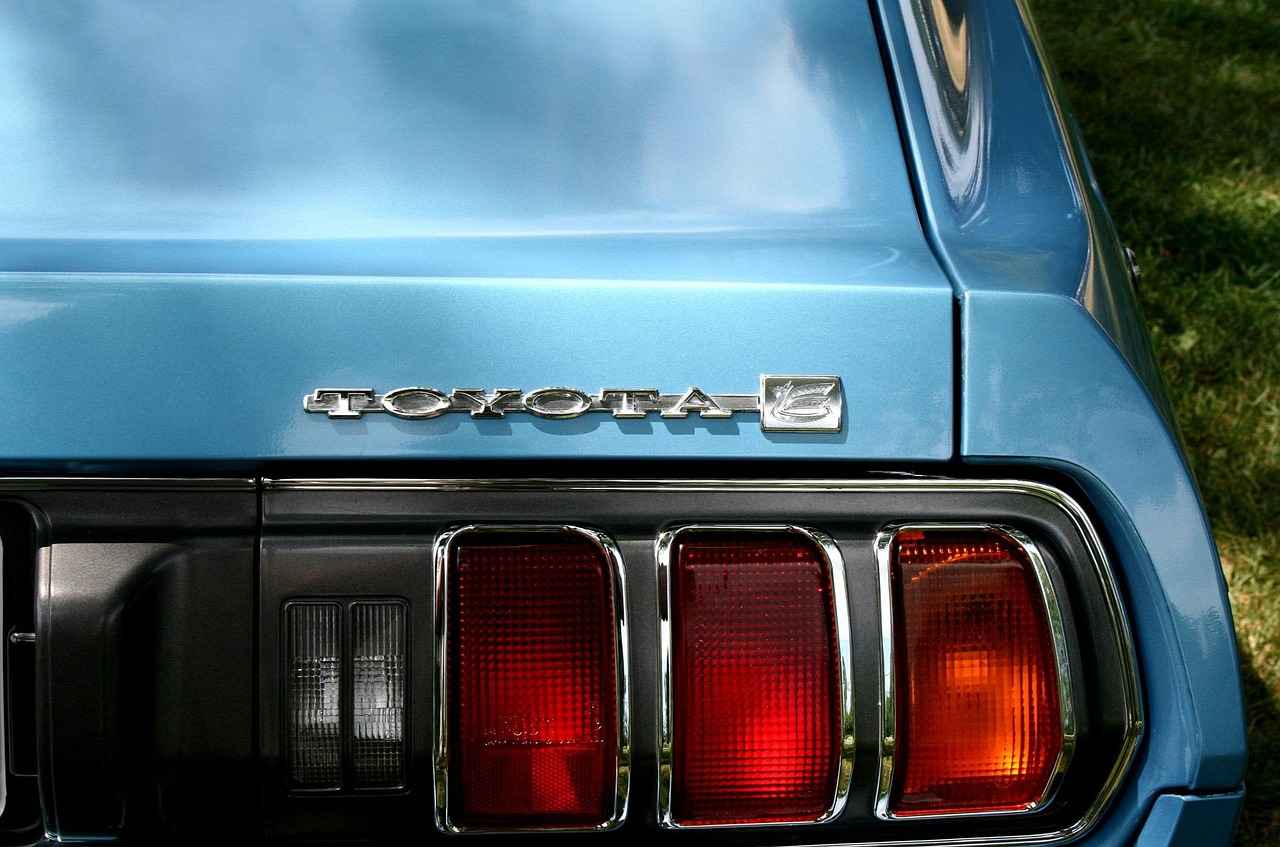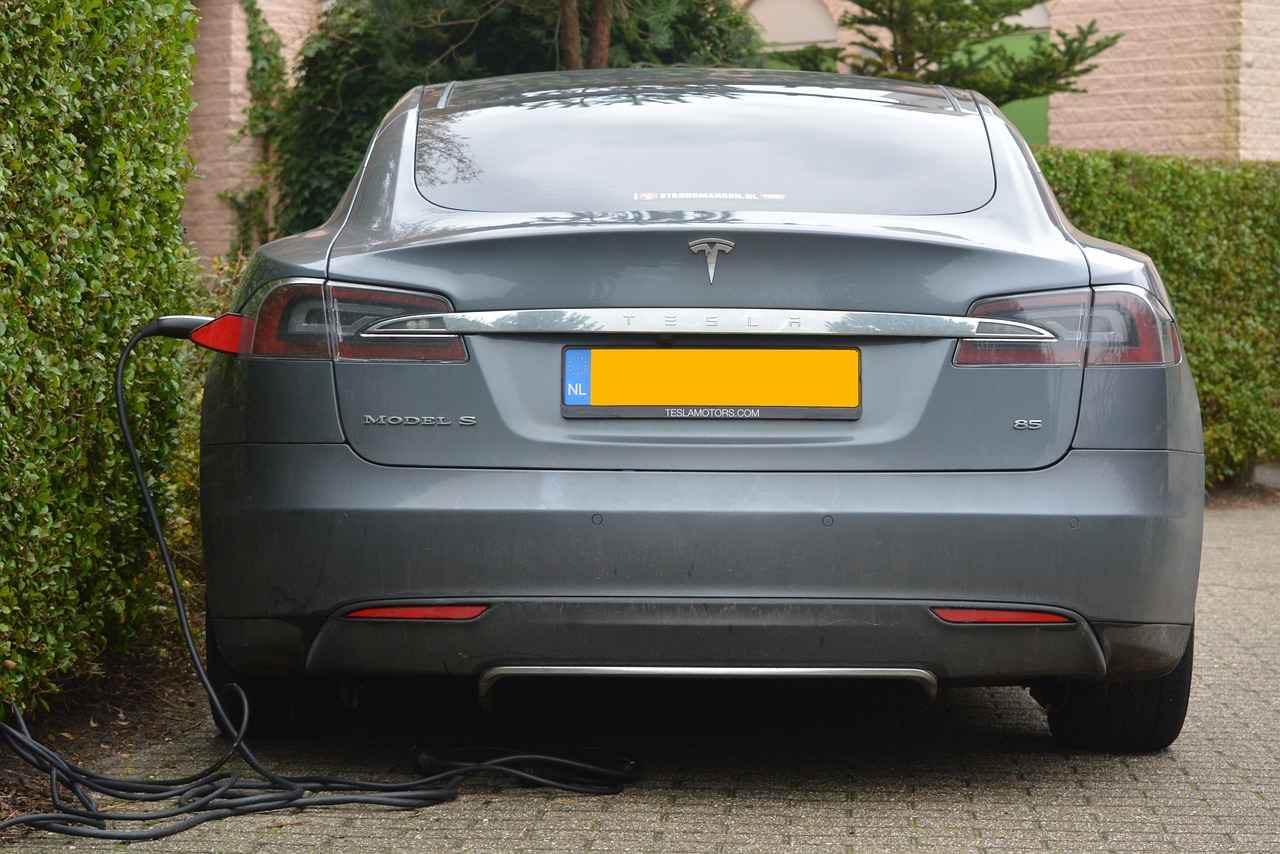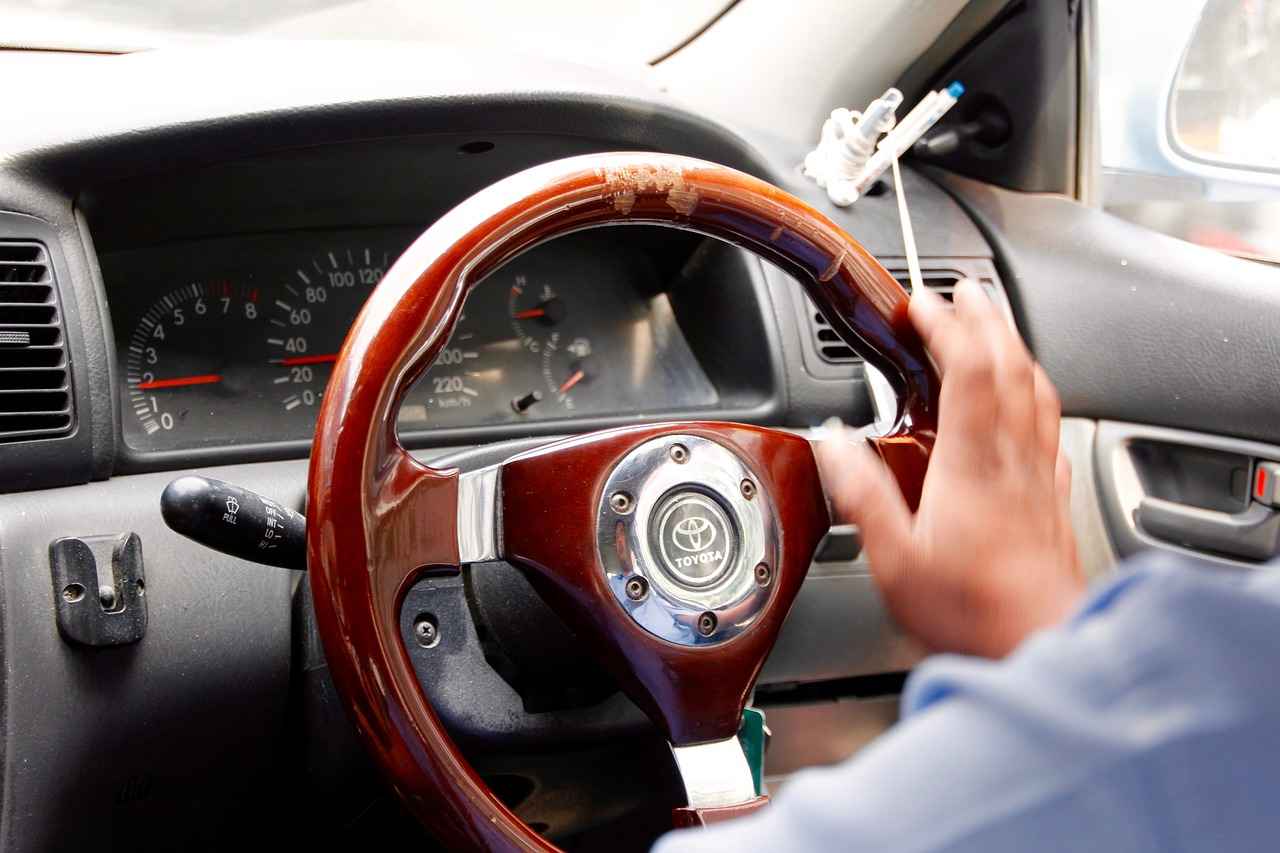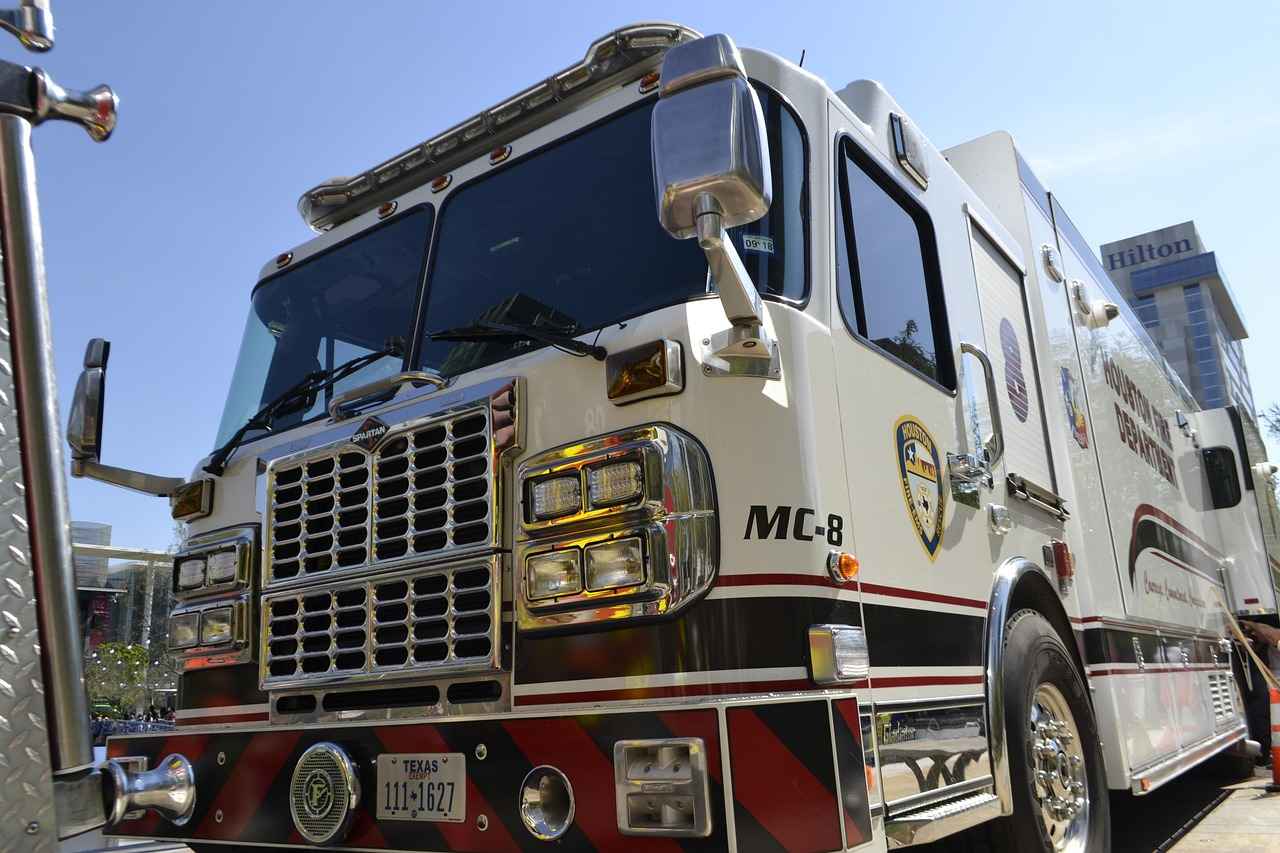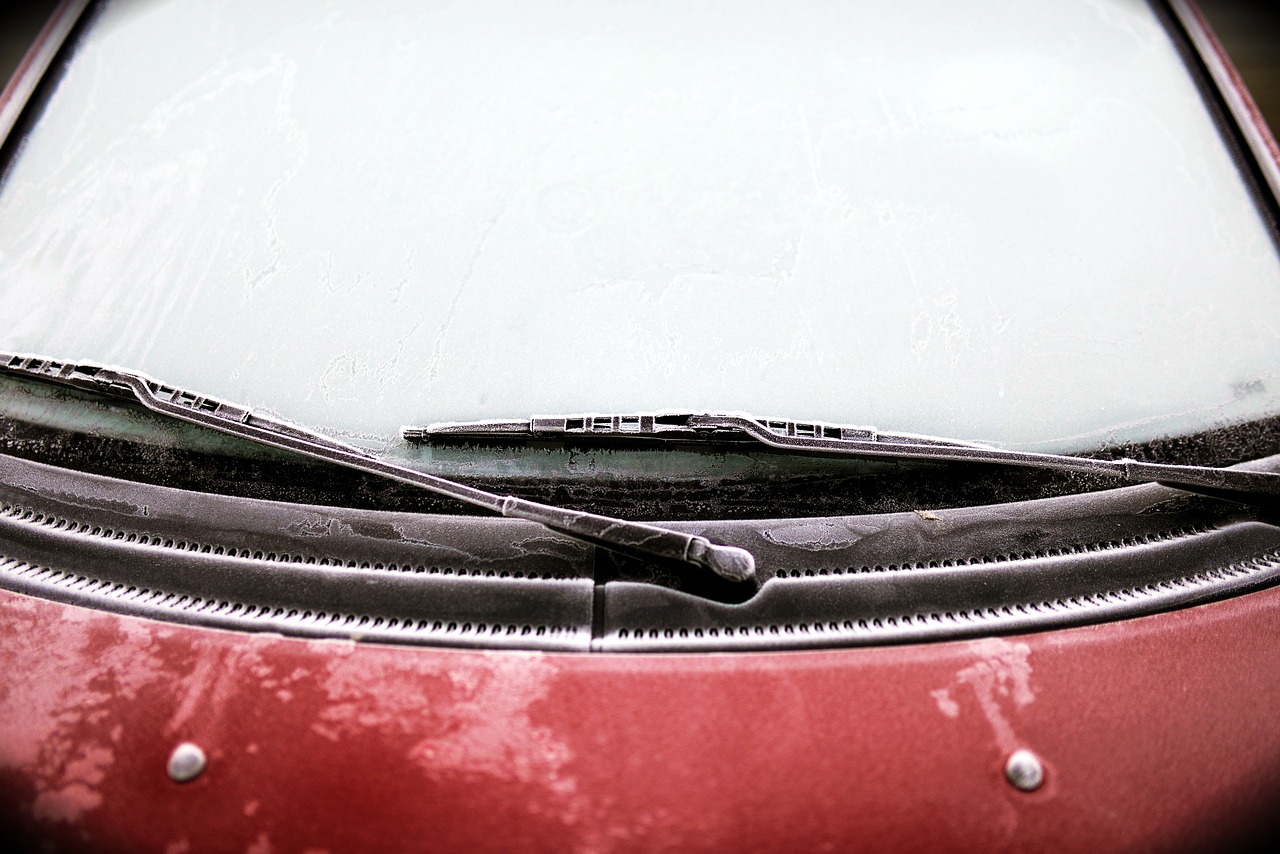Windshield wipers are essential for maintaining visibility during rain, snow, and other adverse weather conditions. When they malfunction, it can lead to dangerous driving situations. This article provides a comprehensive guide on how to troubleshoot and repair windshield wipers that aren’t working, ensuring your safety and clarity on the road.
Identifying the root cause of windshield wiper failure is crucial for effective repair. Common issues include:
- Worn-out wiper blades
- Faulty wiper motor
- Electrical issues
- Blown fuses
- Malfunctioning wiper switch
Troubleshooting involves a systematic approach to identify the problem. Follow these steps:
- Check the wiper blades: Inspect for any visible damage such as cracks or tears.
- Test the wiper motor: Listen for unusual sounds or check if the motor is operating.
- Examine the electrical components: Look for blown fuses or damaged wiring.
- Test the wiper switch: Ensure it is functioning correctly by testing all settings.
Inspecting the wiper blades is a critical first step. Damaged blades can lead to poor performance and reduced visibility. Regularly check for signs of wear, such as:
- Cracks or tears in the rubber material
- Streaking on the windshield during use
- Inconsistent contact with the glass surface
To check for blade damage:
1. Lift the wiper arm away from the windshield.2. Examine the rubber for any visible defects.3. Run your fingers along the blade to feel for rough spots.
It is recommended to replace wiper blades every six to twelve months based on usage and environmental conditions. Regular maintenance can significantly enhance performance and safety.
The wiper motor is a vital component. If the wipers are not moving, the motor may be at fault. To test the motor:
- Listen for any sounds when activating the wipers.
- Check for power at the motor connection.
Electrical problems can often lead to wiper malfunctions. Here are some potential issues:
A blown fuse is a common issue that can interrupt the power supply to the wipers. Checking the fuse box for any blown fuses is a straightforward troubleshooting step. Replace any blown fuses with the correct amperage to restore functionality.
The wiper switch, typically located on the steering column, can malfunction over time. To diagnose this:
- Test the switch in different positions and observe the wiper response.
- Use a multimeter to check for continuity in the switch.
By following these troubleshooting steps and understanding the common causes of windshield wiper malfunctions, you can effectively diagnose and address issues, ensuring your vehicle remains safe and visible in all weather conditions.

What Are Common Causes of Windshield Wiper Malfunctions?
Windshield wipers are essential for maintaining clear visibility during rain or snow. However, they can sometimes fail, leading to dangerous driving conditions. Understanding the common causes of windshield wiper malfunctions can significantly aid in diagnosing and resolving the issue promptly.
Windshield wiper failures can stem from various factors, each affecting their performance and reliability. Below are some of the most typical issues that can lead to malfunctioning wipers:
- Worn Wiper Blades: Over time, wiper blades can wear out due to exposure to harsh weather conditions. Look for cracks, tears, or hardening of the rubber material. If the blades leave streaks on the windshield or fail to make proper contact, they likely need replacement.
- Faulty Wiper Motor: The wiper motor is responsible for the movement of the blades. If the blades are not moving at all, the motor may be defective. Testing the motor with a multimeter can help determine its functionality.
- Electrical Issues: A variety of electrical problems can impact wiper performance. This includes blown fuses or issues with the wiring that supplies power to the wipers. It’s essential to check the fuse box for any blown fuses as a first troubleshooting step.
- Malfunctioning Wiper Switch: The wiper switch, located on the steering column, can also be a source of problems. If the switch is not functioning correctly, it may not send the proper signals to the wiper motor, resulting in non-operation.
- Linkage Problems: The mechanical linkage connecting the wiper motor to the blades can also wear out or disconnect. Inspecting the linkage for any signs of wear or disconnection is crucial for proper wiper function.
By being aware of these common issues, you can quickly identify potential problems and take the necessary steps to rectify them. Regular maintenance and inspections can prevent many of these issues from arising in the first place.
Once you recognize the common causes of wiper malfunctions, the next step is effective troubleshooting. Here are some practical steps to help you identify the root cause of the problem:
- Inspect the Wiper Blades: Start by examining the wiper blades for any visible damage. If they appear worn or damaged, replacing them is a straightforward solution.
- Test the Wiper Motor: If the blades are intact, check the wiper motor’s functionality. You can do this by applying direct power to the motor to see if it operates. If it doesn’t, replacement may be necessary.
- Check the Fuses: Examine the fuse box for any blown fuses related to the wiper system. Replace any blown fuses and test the wipers again.
- Examine the Wiper Switch: If the wipers still do not function, the issue may lie in the wiper switch. Testing the switch with a multimeter can confirm whether it is sending the correct signals.
- Inspect the Linkage: Finally, check the mechanical linkage for any signs of disconnection or damage. Ensuring all components are securely attached is crucial for proper operation.
By following these troubleshooting steps, you can efficiently diagnose the issue with your windshield wipers and take appropriate action to restore their functionality.

How Can You Troubleshoot Windshield Wiper Issues?
When it comes to vehicle maintenance, ensuring that your windshield wipers function properly is crucial for driver safety and visibility, especially during adverse weather conditions. Troubleshooting windshield wiper issues is essential for accurately diagnosing the problem and implementing effective solutions. This section provides a comprehensive guide to identifying the root cause of wiper malfunctions.
To effectively troubleshoot windshield wiper problems, follow these practical steps:
- Check the Wiper Blades: Inspect the wiper blades for any visible signs of damage such as cracks, tears, or worn-out rubber. If the blades are not making proper contact with the windshield, they need to be replaced.
- Examine the Wiper Motor: The wiper motor is responsible for the movement of the blades. If the blades are not moving at all, it’s essential to test the motor. You can do this by checking for any unusual noises or by using a multimeter to check for power.
- Inspect the Fuse Box: A blown fuse can interrupt the power supply to the wipers. Locate the fuse box and inspect it for any blown fuses related to the wiper system. Replacing a blown fuse is a simple and quick fix.
- Test the Wiper Switch: The wiper switch, usually located on the steering column, can also malfunction. Ensure that it is functioning correctly by testing it to see if it sends signals to the wiper motor.
- Check for Electrical Issues: Look for any loose or damaged wiring that could affect the wiper’s performance. Ensure all connections are secure and free from corrosion.
Wiper blades play a vital role in ensuring clear visibility during rain or snow. If your wipers are leaving streaks or not clearing the windshield effectively, it may be time to replace them. Regular maintenance of the blades, including cleaning and inspection, can prolong their lifespan and enhance performance.
It is generally recommended to replace windshield wiper blades every six to twelve months, depending on factors such as usage and environmental conditions. For instance, if you frequently drive in harsh weather or park your vehicle in direct sunlight, you may need to replace them more often. Regularly checking the condition of your wiper blades can help maintain optimal visibility.
If your wipers are not working at all, the wiper motor may be the culprit. Testing the motor involves checking for power and ensuring that it is receiving the necessary signals from the wiper switch. If the motor is faulty, it will need to be replaced to restore functionality.
Electrical problems are a common cause of windshield wiper malfunctions. Understanding these issues can help you troubleshoot effectively:
- Blown Fuses: As mentioned earlier, blown fuses can disrupt the power supply to the wipers. Always check the fuse box first when troubleshooting.
- Wiring Problems: Damaged or loose wiring can lead to intermittent wiper operation. Inspect all wiring connected to the wiper motor and switch for any issues.
- Faulty Wiper Switch: If the switch is not functioning correctly, it can prevent the wipers from operating. Testing the switch can help determine if it needs replacement.
By following these troubleshooting steps and understanding the common causes of windshield wiper issues, you can effectively diagnose and resolve any problems, ensuring a safer driving experience.
Are the Wiper Blades Damaged?
When it comes to ensuring safe driving conditions, windshield wiper blades play a critical role. They are essential for maintaining clear visibility during rain, snow, or any adverse weather. Therefore, it is vital to regularly inspect these components for signs of wear and tear. Damaged wiper blades can significantly hinder performance, leading to streaks, missed spots, or, in worst cases, complete failure during a downpour. This not only compromises your visibility but also increases the risk of accidents.
To ensure your wiper blades are functioning correctly, you should look for specific indicators of damage:
- Cracks or Tears: Inspect the rubber for visible cracks or tears, which can prevent the blade from making proper contact with the windshield.
- Streaking: If your wipers leave streaks or smears on the glass, it may indicate that the rubber is worn out and no longer effective.
- Noisy Operation: Unusual noises during operation can suggest that the blades are not gliding smoothly across the surface.
- Missed Spots: If the blades fail to clear certain areas of the windshield, it’s a clear sign they need replacing.
Experts recommend checking your wiper blades at least once every six months. Regular checks can help you catch any issues before they become serious problems. Additionally, if you live in an area with extreme weather conditions, more frequent inspections may be necessary.
Neglecting to replace worn wiper blades can lead to several issues:
- Reduced Visibility: This can severely impair your ability to see the road, especially during heavy rain.
- Increased Risk of Accidents: Poor visibility can lead to dangerous driving conditions, putting you and others at risk.
- Potential Damage to Windshield: Worn-out blades can scratch the glass, leading to costly repairs.
Replacing wiper blades is a straightforward process that can be done in a few simple steps:
- Purchase the Right Blades: Ensure you buy the correct size and type for your vehicle.
- Lift the Wiper Arm: Carefully lift the arm away from the windshield.
- Remove the Old Blade: Press the tab on the wiper blade to release it from the arm.
- Attach the New Blade: Slide the new blade onto the arm until it clicks into place.
- Test the Wipers: Once installed, turn on the wipers to ensure they function smoothly.
In conclusion, keeping your windshield wiper blades in good condition is essential for safe driving. Regular inspections and timely replacement of damaged blades can help maintain optimal visibility and reduce the risk of accidents.
How to Check for Blade Damage?
When it comes to maintaining your vehicle, ensuring that your windshield wipers are in optimal condition is critical for safety and visibility, especially during inclement weather. One of the first steps in this maintenance process is to regularly check the wiper blades for any signs of damage. This article provides a comprehensive guide on how to check for blade damage and what to look for to ensure your wipers are functioning properly.
Regular inspections of your windshield wiper blades can help you catch issues before they become major problems. Here are the key indicators of blade damage:
- Cracks: Examine the rubber edge of the blades for any visible cracks. Even small cracks can lead to ineffective wiping.
- Tears: Inspect for tears or pieces of rubber that may be missing. This can significantly reduce the blade’s ability to clear water from the windshield.
- Wear: Over time, the rubber can wear down, becoming hard and less flexible. This wear can result in poor contact with the windshield surface.
- Streaking: If you notice streaks left on the windshield during operation, this is often a sign that the blades are not making proper contact.
- Noisy Operation: If your wipers squeak or chatter while in use, it could indicate that the blades are worn out or damaged.
Driving with damaged wiper blades can compromise your visibility, especially in heavy rain or snow. This can increase the risk of accidents. Therefore, timely replacement is not just a matter of convenience; it is a matter of safety.
It is recommended to check your wiper blades at least once a month, and especially before the start of the rainy season or winter. Regular maintenance will help ensure that your wipers are ready to perform when you need them most.
If you notice any of the following signs, it is advisable to replace your wiper blades promptly:
- Inconsistent Wiping: If the blades leave sections of the windshield untouched, they are likely worn out.
- Visible Damage: Any cracks, tears, or missing pieces should prompt immediate replacement.
- Frequent Streaking: If streaking occurs regularly, it indicates that the blades are no longer effective.
Replacing wiper blades is a simple process that can usually be done without professional help. Here’s how:
1. Lift the wiper arm away from the windshield.2. Locate the release tab on the wiper blade.3. Press the tab and slide the blade off the arm.4. Align the new blade with the arm and slide it into place until you hear a click.5. Gently lower the wiper arm back onto the windshield.
By following these steps, you can ensure that your windshield wipers are always in top condition, providing you with the visibility you need while driving.
When Should You Replace Wiper Blades?
Maintaining clear visibility during adverse weather conditions is essential for safe driving. One of the most critical components of your vehicle’s safety system is the windshield wiper blades. Replacing wiper blades at the right intervals is crucial for optimal performance. It is generally recommended to replace wiper blades every six to twelve months, but this can vary based on several factors.
What Factors Influence Wiper Blade Replacement?
- Usage Frequency: If you frequently drive in rainy or snowy conditions, your wiper blades will wear out faster. Daily commuters may need to replace their blades more often than those who drive less frequently.
- Environmental Conditions: Extreme temperatures, whether hot or cold, can affect the rubber material of the wiper blades. Prolonged exposure to sunlight can lead to cracking, while freezing temperatures can cause stiffness.
- Quality of Wiper Blades: The type of wiper blades you choose also plays a significant role. Higher-quality blades may last longer than standard ones, so investing in premium options can be beneficial.
How Can You Tell If Wiper Blades Need Replacement?
Regular inspection of your wiper blades is essential. Look for the following signs that indicate it’s time for a replacement:
- Streaking: If your wipers leave streaks on the windshield, it’s a clear sign that the rubber is worn out and not making proper contact.
- Chattering: A chattering sound during operation can indicate that the blades are not gliding smoothly across the glass, often due to wear.
- Physical Damage: Inspect the blades for any visible cracks, tears, or chunks missing from the rubber. Any physical damage warrants immediate replacement.
What Are the Risks of Not Replacing Wiper Blades?
Neglecting to replace worn-out wiper blades can lead to several risks:
- Reduced Visibility: Ineffective wipers can severely impair your ability to see during rain or snow, increasing the risk of accidents.
- Damage to Windshield: Worn blades can scratch the glass, leading to costly repairs or replacements.
- Increased Maintenance Costs: Delaying replacement can lead to more significant problems, requiring additional repairs in the long run.
How to Properly Maintain Wiper Blades?
To extend the life of your wiper blades, consider these maintenance tips:
- Clean the Blades: Regularly clean the rubber edges of the blades with a soft cloth and windshield cleaner to remove dirt and debris.
- Use the Right Washer Fluid: Ensure that your windshield washer fluid is suitable for your climate to prevent freezing or streaking.
- Store Your Vehicle Properly: If possible, park your car in a garage or shaded area to protect the wiper blades from extreme weather conditions.
In conclusion, keeping your wiper blades in top condition is essential for safe driving. Regular checks and timely replacements not only enhance visibility but also contribute to the overall safety of your vehicle. By being proactive in your maintenance, you can avoid potential hazards and ensure a smoother driving experience.
Is the Wiper Motor Functioning Properly?
When it comes to maintaining your vehicle, ensuring that all components function properly is essential for safety and performance. One critical component that often gets overlooked is the wiper motor. This small yet powerful device is responsible for moving the windshield wipers across the glass, providing essential visibility during rain or snow.
The wiper motor plays a pivotal role in the operation of your windshield wipers. If the motor is malfunctioning, the wipers may not move at all, leaving you with impaired visibility during adverse weather conditions. Understanding how to diagnose issues with the wiper motor is crucial for any vehicle owner.
Detecting a faulty wiper motor involves several steps. Here are some practical methods to assess its functionality:
- Listen for Unusual Noises: When you activate the wipers, listen for any grinding or clicking sounds that may indicate mechanical failure.
- Check for Movement: If the wipers do not move at all, it could be a sign that the motor is not receiving power or is damaged.
- Inspect the Connections: Loose or corroded electrical connections can prevent the motor from functioning properly. Ensure all connections are secure and clean.
There are several indicators that may suggest your wiper motor is on the verge of failure:
- Intermittent Wiper Function: If the wipers operate sporadically, it may indicate a problem with the motor or its electrical connections.
- Wipers Stopping Mid-Swipe: If the wipers stop in the middle of their cycle, it could mean the motor is failing.
- Burning Smell: A burning odor when activating the wipers can indicate an electrical issue within the motor.
Testing the wiper motor is a straightforward process that can help you determine if it needs replacement:
1. Disconnect the battery to ensure safety.2. Locate the wiper motor, usually found under the hood or beneath the dashboard.3. Use a multimeter to check for voltage at the motor's connector.4. If voltage is present but the motor doesn't operate, it may need replacement.
If your tests indicate that the wiper motor is indeed faulty, it’s time to consider a replacement. Replacing the wiper motor promptly is essential to maintain visibility and safety on the road. Typically, if the motor has failed, it is advisable to replace it rather than attempt repairs, as this ensures reliable operation.
Replacing a wiper motor can be a DIY project if you have basic mechanical skills. Here’s a simple guide:
- Gather Necessary Tools: You will need basic hand tools such as screwdrivers and wrenches.
- Follow the Manual: Consult your vehicle’s service manual for specific instructions and diagrams.
- Take Your Time: Ensure all connections are secure, and test the wipers after installation.
In conclusion, understanding the role of the wiper motor and how to troubleshoot issues can significantly enhance your driving safety. Regular checks and timely replacements can prevent unexpected failures, ensuring that your wipers function effectively when you need them the most.

What Electrical Issues Could Affect Wiper Functionality?
When it comes to ensuring clear visibility during rain or snow, functioning windshield wipers are essential. However, many vehicle owners may encounter issues with their wipers that stem from electrical problems. Understanding these electrical failures can help diagnose and resolve wiper malfunctions effectively.
Electrical problems can often lead to wiper issues, which can be both frustrating and dangerous. This section delves into potential electrical failures that may be affecting your windshield wipers, helping you pinpoint the root cause of the problem.
A blown fuse is one of the most common electrical issues that can disrupt the operation of your windshield wipers. Fuses are designed to protect the electrical circuits by breaking the connection when there is an overload. To check for blown fuses:
- Locate the fuse box, typically found under the dashboard or in the engine compartment.
- Identify the fuse associated with the windshield wipers.
- Inspect the fuse for any signs of damage, such as a broken wire or a burnt appearance.
If you find a blown fuse, replacing it with a new one of the same amperage can often restore functionality.
The wiper switch, located on the steering column or on the dashboard, is responsible for sending signals to the wiper motor. If the switch malfunctions, it may prevent the wipers from operating correctly. To test the wiper switch:
- Turn on the ignition and activate the wiper switch.
- Listen for any clicking sounds or observe if the wipers respond.
- If there is no response, use a multimeter to check for continuity in the switch.
Replacing a faulty wiper switch can resolve issues related to non-functioning wipers.
The wiper motor is the component that drives the wipers across the windshield. If the motor is defective, the wipers may fail to operate. To assess the motor’s functionality:
- Disconnect the power supply to the wiper motor.
- Use a multimeter to check for voltage at the motor terminals when the wipers are activated.
- If there is no power, the issue may lie in the wiring or the switch.
- If power is present but the motor does not operate, it may need to be replaced.
Damaged or corroded wiring can also lead to wiper malfunctions. Inspect the wiring connected to the wiper motor and switch for:
- Frayed or broken wires
- Corrosion at connections
- Loose or disconnected plugs
Repairing or replacing damaged wiring can restore proper function to your windshield wipers.
Some vehicles use a relay to control the power supply to the wipers. If the relay is faulty, it may prevent the wipers from receiving power. To check the relay:
- Locate the relay in the fuse box.
- Swap it with a similar relay from another circuit to see if the wipers start working.
- If the wipers function with the swapped relay, replace the faulty relay.
By understanding these potential electrical issues, you can troubleshoot effectively and restore your windshield wipers to full working order. Regular maintenance and prompt attention to electrical components can prevent future problems and ensure safe driving in adverse weather conditions.
Are There Blown Fuses in the Wiper Circuit?
When it comes to troubleshooting windshield wipers that have suddenly stopped working, one of the most common culprits is a blown fuse. This issue can disrupt the electrical supply necessary for the wipers to function, particularly during adverse weather conditions when visibility is critical. The first step in diagnosing this problem is to check the fuse box, which is typically located under the dashboard or in the engine compartment. Identifying a blown fuse can save you time and money by preventing unnecessary replacements of other components.
Why Do Fuses Blow?
Fuses are designed to protect electrical circuits from overloads. When the current exceeds the fuse’s rated capacity, the metal strip inside the fuse melts, breaking the circuit and preventing further damage. Common reasons for a blown wiper fuse include:
- Short circuits caused by damaged wiring
- Overuse of the wipers in extreme weather
- Faulty wiper motor drawing excessive current
How to Check for Blown Fuses?
To check for a blown fuse, follow these simple steps:
- Locate the fuse box in your vehicle, referring to the owner’s manual if necessary.
- Remove the cover to expose the fuses.
- Identify the fuse linked to the windshield wipers, often labeled clearly.
- Examine the fuse visually; a blown fuse will have a broken wire or a darkened appearance.
- If necessary, use a multimeter to test the continuity of the fuse.
What to Do If You Find a Blown Fuse?
If you discover a blown fuse, it’s important to replace it with one of the same amperage to ensure proper function and safety. Simply pull out the old fuse and insert a new one. However, if the new fuse blows shortly after installation, this indicates a deeper electrical issue that needs further investigation. You may need to check for:
- Damaged wiring or connectors in the wiper circuit
- A malfunctioning wiper motor
- A faulty wiper switch that could be causing the overload
Preventive Measures
To avoid future issues with blown fuses, consider implementing these preventive measures:
- Regularly inspect the condition of your wiper blades and motor.
- Ensure that the wiper system is not used when the windshield is dry or during heavy snow.
- Conduct routine electrical system checks as part of your vehicle maintenance.
In summary, checking for blown fuses is a straightforward yet crucial first step in troubleshooting windshield wiper issues. By understanding the reasons behind fuse failures and how to address them, you can maintain your vehicle’s visibility and safety during inclement weather.
Is There a Problem with the Wiper Switch?
The windshield wiper system is a crucial component of vehicle safety, especially during adverse weather conditions. When wipers fail to operate, it can significantly impair visibility, leading to dangerous driving situations. One often overlooked aspect of this system is the wiper switch, which is located on the steering column. This article will delve into the potential issues related to the wiper switch and how to troubleshoot them effectively.
The wiper switch controls the operation of the windshield wipers, allowing the driver to adjust their speed and frequency. When this switch malfunctions, it can lead to several issues, including:
- Wipers not operating at all
- Wipers stuck in one position
- Inconsistent wiper speed
Diagnosing a faulty wiper switch involves a few straightforward steps:
- Check the Wiper Operation: Turn on the wipers using the switch and observe their functionality. If they do not respond, the switch may be the culprit.
- Inspect Electrical Connections: Ensure that all connections to the wiper switch are secure. Loose or corroded connections can disrupt the signal.
- Use a Multimeter: Testing the switch with a multimeter can confirm whether it is sending the correct signals to the wiper motor. Set the multimeter to measure resistance and check for continuity when the switch is activated.
Being aware of the signs that indicate a problem with the wiper switch can help in early diagnosis. Common symptoms include:
- Wipers not responding: If the wipers do not move when the switch is activated, this may indicate a switch failure.
- Erratic movement: If the wipers operate inconsistently, such as stopping suddenly or changing speeds unexpectedly, the switch may be faulty.
- Unresponsive settings: If certain settings on the switch do not engage the wipers, it could signify internal damage.
If you determine that the wiper switch is indeed malfunctioning, the next steps typically involve:
1. Disconnect the battery to ensure safety.2. Remove the steering column cover to access the switch.3. Disconnect the wiper switch from its harness.4. Replace the faulty switch with a new one.5. Reconnect everything and test the wipers.
In some cases, a wiper switch can be repaired if the issue is minor, such as a loose connection. However, if the switch is damaged or worn out, replacement is usually the best option. It’s essential to use a switch that is compatible with your vehicle model to ensure proper functionality.
In conclusion, the wiper switch plays a vital role in the performance of your windshield wipers. Regular checks and maintenance can help prevent issues, ensuring that your visibility is never compromised during inclement weather. If you suspect a problem with the wiper switch, following the outlined diagnostic steps can help you identify and resolve the issue effectively.
Frequently Asked Questions
- What should I do if my windshield wipers are not working at all?
If your windshield wipers aren’t moving, first check the fuse box for any blown fuses. If the fuses are fine, inspect the wiper motor and switch for any faults. Sometimes, a simple reset of the system can do the trick!
- How can I tell if my wiper blades need replacing?
Look for signs like cracks, tears, or frayed edges on the rubber. If your blades leave streaks or fail to clear the windshield effectively, it’s definitely time for a replacement!
- Is it safe to drive with malfunctioning windshield wipers?
Absolutely not! Driving with faulty wipers can severely reduce visibility, especially in rain or snow. It’s best to address the issue promptly to ensure your safety on the road.
- How often should I replace my windshield wiper blades?
It’s generally recommended to replace your wiper blades every six to twelve months, depending on the climate and usage. Regular checks can help maintain optimal performance!
- Can electrical issues affect my windshield wipers?
Yes, electrical problems like a faulty wiper switch or blown fuses can definitely impact wiper functionality. A quick inspection of the electrical components can help identify the issue.






